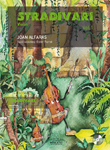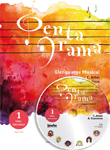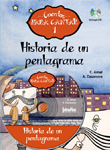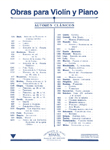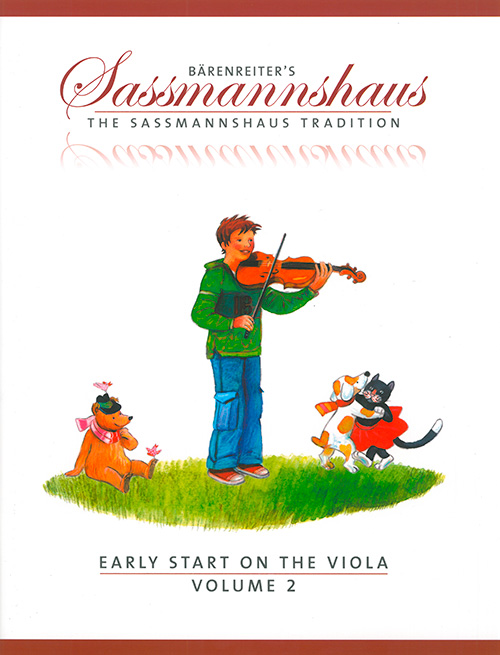WORKS
- Genre
-
Musical education
- Choir
- Counterpoint
- Dictation
- Direction
- Exam study manuals
- General music pedagogy
- Harmony
- Hearing
- Illustrations / Posters
- Improvisation / Sight reading
- Instrument methods
- Instrument pedagogy
- Instrumental study repertoire
- Instrumentation and orquestration
- Musical language
- Solfège
- Templates
- Theory and analysis
-
Incidental music
-
Lined paper
-
Flamenco
-
Religious music
-
Classical / contemporary
-
Modern music
-
Folk music / traditional
-
Musicology
-
Divulgation
-
Games and hobbies
-
Music therapy
-
Children / Youth
-
- Instruments
- Ensemble
- Difficulty level
- Period
- Genre
SOPORTE
Search
Find here: books, scores, composers, digital pieces, cd's
Best-selling works
Our classics

Newsletter
I wish to be informed of the news about your music
We have received your e-mail correctly
Multimedia
Early Start on the Viola Volume 2
Viola
SASSMANNSHAUS, Egon; SASSMANNSHAUS, KurtSASSMANNSHAUS, Egon; SASSMANNSHAUS, KurtSASSMANNSHAUS, Egon; SASSMANNSHAUS, KurtReg.: BA9687
17,00 €
P.V.P. (VAT included 4%)
Add to cart
- Ensemble: Solo.
- Genres: Classical / contemporary: Facilitated; Chamber.
Musical education: Instrumental study repertoire; Instrument methods.
Children / Youth: Songs; Instrumental solo.
Folk music / traditional: Light song.
- Language: Inglés
- Product format: Partitura
- Difficulty level: Elementary
- Period: 2nd half S. XX - XXI
- Publishing house: Bärenreiter
- No. of pages: 68
- Measure: 30,00 x 23,00 cm
- ISMN: 979-0-006-53929-1
- Available in digital: No
- Available for rent: No
Volume 2 in our series, with colour illustrations and easy-to-read fingering charts, contains not only nursery rhymes and folk songs but also classical recital pieces for two violas to help learners improve their ability to read music. They will become acquainted with dotted notes, 16th notes (semiquavers) and their first double stops as well as with changing between high and low finger positions.
The volume is pioneering with its early introduction of playing in different positions: by combining finger patterns, the cornerstone of good scale technique, learners can play major and minor scales in every position without using open strings – and this often in the very first year of lessons! This allows them to transpose the familiar nursery rhymes they have already mastered into other keys and higher positions. Together with the beginning shifting exercises, it provides a solid basis for early virtuosity – a great advantage offered by no other tutor in the same way.
· Preface
· The Fourth Finger Is The Tonic
· Triads In F major, C major And G major
· Songs With The New Finger Pattern
· The Dotted Quarter Note
· The Second Finger Changes Between High And Low Positions
· The First Finger Is The Tonic
· Triads In D major, A major And E major
· Songs With The New Finger Pattern
· Changing Between High And Low Finger Positions
· The Three Finger Patterns
· Playing In Different Positions With The Three Patterns
· Double Stops
· The Second Finger Is The Tonic
· Triads In E-flat major, B-flat major And F major
· Songs With The New Finger Pattern
· Sixteenth Notes
· The First Finger Changes Between High And Low Positions
· F major Notes In First Position
· Exercises And Pieces In F major
· Major And Minor Scales And Arpeggios Across Four Strings

